Sam Spratt has spent the last five years reengineering the very idea of a painting. Once a cover artist for pop culture powerhouses, he felt his authorship evaporate in layers of approvals and middle management. Blockchain offered a new host for memory. That spark ignited Luci, a Renaissance scale mythos of skulls, pilgrims, and masks whose chapters now exist as high resolution oil illusions on Ethereum.
IX. The Monument Game transformed a canvas into a multiplayer arena where 256 collectors carved love letters, riddles, and even ASCII vandalism directly onto the image. Spratt's most recent project, Masquerade, a new chapter in the larger Story of Luci series, debuted in early 2025 picking up where The Monument Game left off, expanding the story but this time, through new narratives, new Masks of Luci, and a new interactive structure.
In the conversation that follows, Spratt explains the guardrails that kept this collaboration productive, shares why he gifted hundreds of new Masks to his community after a record setting sale, and returns to a single obsession: safeguarding the soul of art, and the identities bound to it, inside systems resilient enough to outlast our collective forgetfulness.

OpenSea: Can you take us back to the moment you realized blockchain might be the next big moment for art? What clicked, and why did it feel worth leaving the comfort of your past work behind?
Sam Spratt: From afar, the appeal was that I felt a kind of distance being reduced, a gap being closed to help memory, or something like it, survive. Most of the artwork I had created prior was for others across most pop cultural mediums: music, film, tv, video games, comics, etc. And I had done so in a way where I had unintentionally found myself many years ago as a hidden hand to help execute others’ worlds. I was already grappling at the time with a constant sense of “who I was” getting lost either through memory, middle management, or time that though I’d brought that on myself and though I was beginning to see the cracks in the reality, I didn’t know how to get out until I saw how people moved outside of my existing bubble. At its most basic draw: in art and on the blockchain, I felt a wild culture where no one was asking permission to make something, didn’t need to filter it through some sort of mesh of palatability, and that despite all the pseudonymity, what seemed to create the foundation of that culture was preserving origination points of creation and its contributors. Memory was surviving. It wasn’t as if these things only exist because of the blockchain, it’s more that it reminded me of what had been taken for granted by myself at the time. Human memory seems to survive by jumping to tougher hosts: song, stone, servers. Blockchain felt ready for war, upheaval, change, and happened to be looking at it while statues and temples were being destroyed in regime change, it had a dog in it to survive: kill a node and a thousand mirrors keep breathing. I was drawn to a natural redundancy.
I’m projecting a feeling on a wide set of technologies here, but if I’m taking you back, It appeared as if something in this technology would help memory not get lost at a time when I felt I had accidentally lost large parts of myself. By minting each painting on Ethereum, I timestamped my creations in a ledger that above anything: is representative of a source point of my identity. And same as when a piece is collected, there is that line of code, that transaction, that is a source point of another person’s identity and, in that exchange, there’s the opportunity for relationship and connectivity - art that begins in imagery, but can extend into the network. The content of the story of Luci echoes this. My utilization of it so far has external dependencies, but it’s energy spent in the attempt for an origination point to survive within a sturdier host. Storing the bytes on IPFS or Arweave makes the file’s hash its address, so any perfect copy must resolve to that same on-chain record or expose itself as altered. Storing the observations written atop my paintings by others on-chain preserves a sense of place, time, creation, relationship, and personhood attached from one piece to the next. There are many ways for identity and origin point to survive: museum registrar, foundation, cloud drive, and legal certificates all contribute, but none of them rhyme with the veins and roots with quite the same poetry.
I’ve placed my bets accordingly in the belief that it will become foundational to what we are going to become and our individual authorship within an increasingly networked species.
OpenSea: There’s unmistakable Renaissance scale and vibe in your work, yet it lives in massive pixel counts on‑chain. How do you walk the line between artistic imperfection and digital precision? Does knowing a collector can magnify your artwork change how you compose a piece?
Sam Spratt: My work is far from pure or precise, but it’s definitely filled with the tension to try. Anything for others to find is something I first was always finding for myself. So at any scale or magnification, that tension - that pursuit to take an idea out of the head and into the world through exertions whether in the individual pieces, surrounding collections, systems weaving them together, or even how they are shared, is to mark the pursuit of growth. To get better through craft, connection to time, to tell a tool-agnostic story of atomized nodes reconnecting in a space under and above this world.


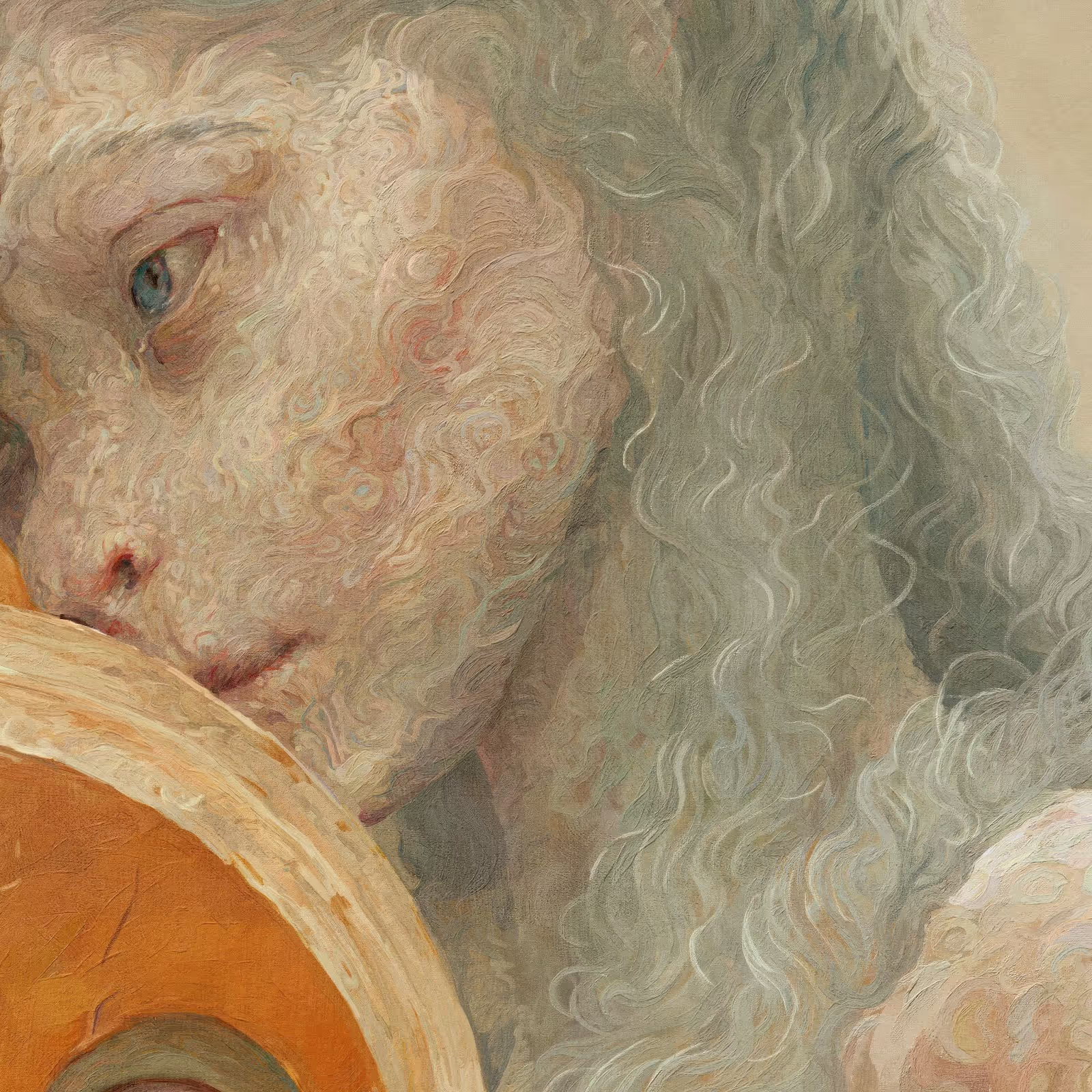
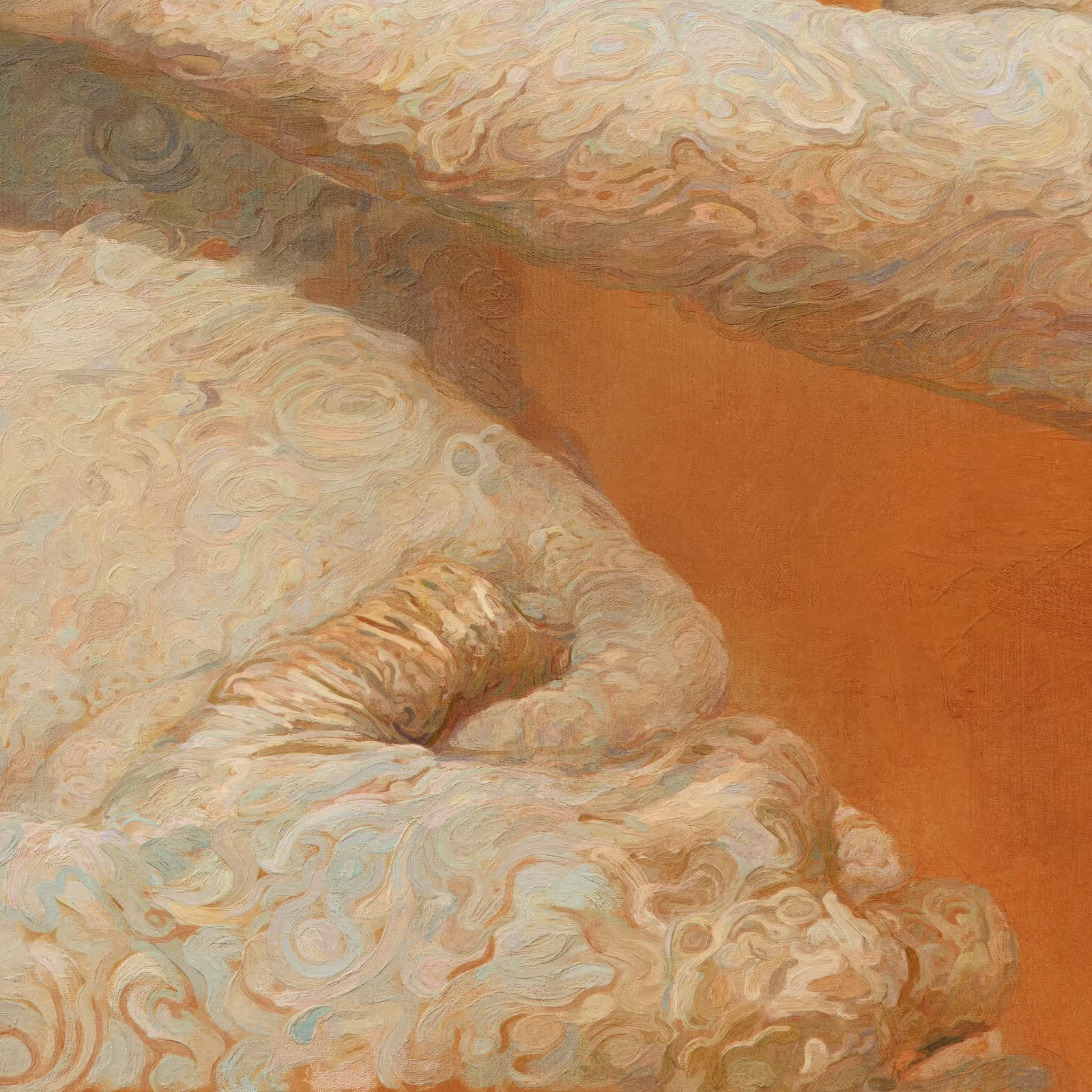
OpenSea: You’ve called Luci a “refracted self‑portrait.” What personal moment first pushed you to paint that birth scene in Chapter 1?
Sam Spratt: Painting that first piece, Birth of Luci, reminds me of exactly what it felt like: melodramatic earnesty and all, to fall apart and start over again. While it seems very dramatic a few years removed, it was what I was equipped to handle at the time.

I was standing in Brooklyn after losing love, friendship, life, a sense of self, and had about 10 years prior of a climb towards what felt like life slip out from under me. On a very bitter February morning, I looked at this postcard I’d lost myself in for the prior decade, where every brick, beam, and pane of glass that once felt solid and sure, now looked time-lapsed and in flux. I could see its decay, and my own unraveling within it, that all the energy in the world to create solidity can break its atomic bonds and return to ether if left unattended. And I looked back at my friend who was the only one there for me when things got hard, and had a new feeling: that this rupture where everything felt gaseous and turbulent wasn’t some terrible moment or trauma, it was a funny gift I accidentally made for myself to reveal how unprepared I was to open it. A low point but a good moment, because it meant I got to try again, in the same life, paying a little more attention to what I’d ignored the first time around.
Bringing your missteps into the light refracts, it turns into a prism, bending through others perspectives until all our seemingly separate ruptures start to share a spectrum.
OpenSea: The wasteland around Luci has so many cryptic glyphs and relics. How do you decide what to explain outright and what breadcrumb trails to leave for the community to figure out?
Sam Spratt: I try to communicate enough to come closer. So: communicate the outside edge of a system enough so that people are equipped and motivated to participate, and communicate the inside motivation of its creation, or heart, enough so that people can know me a bit, to see what drove it into existence. But everything left unsaid, which is most of it - anything surrounding “what something means”, is for discovery - walls to protect and reward the curious people.
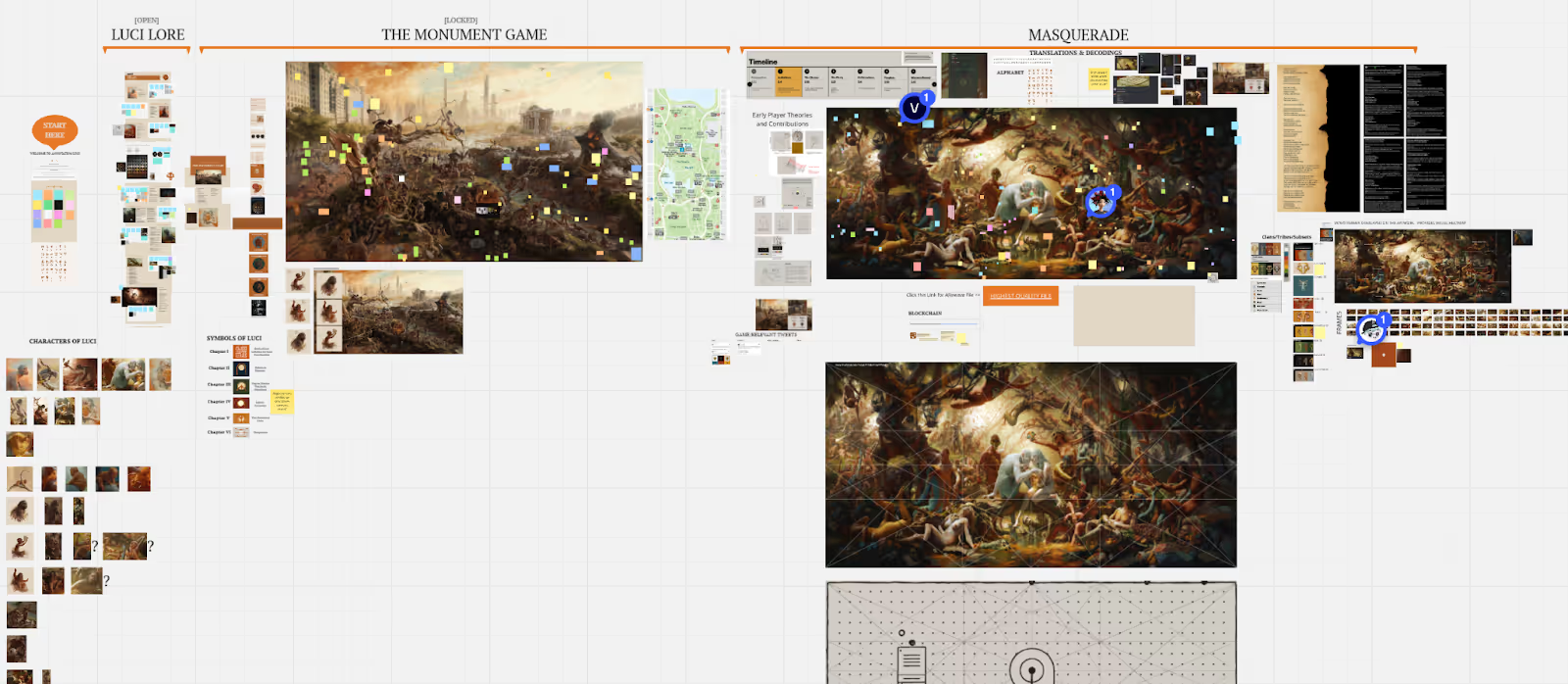
OpenSea: The Monument Game and Masquerade turned a digital canvas into a living entity for hundreds of voices. Did you know, going into it, that the painting could double as a community-driven project?
Sam Spratt: Yes. Its participatory elements were being sketched out at the same time as the drawings and written stories for the piece.

Both chapters, from two very different vantage points, focus on the act of gathering - to congregate and share ourselves with one another. To take a break from the dissociative scroll and swipe - that dulled smoothness that the middle internet can tempt us with and instead use the sides of the web that provoke curiosity and expression. I became interested in using crude tools in the scheme of web art rather than technologically flashy ones. A still artwork I created, words written by others, and a map to mark between us - or in day to day applications terms: your phone’s photos app, twitter, and google maps. A simple and familiar task in a strange place.
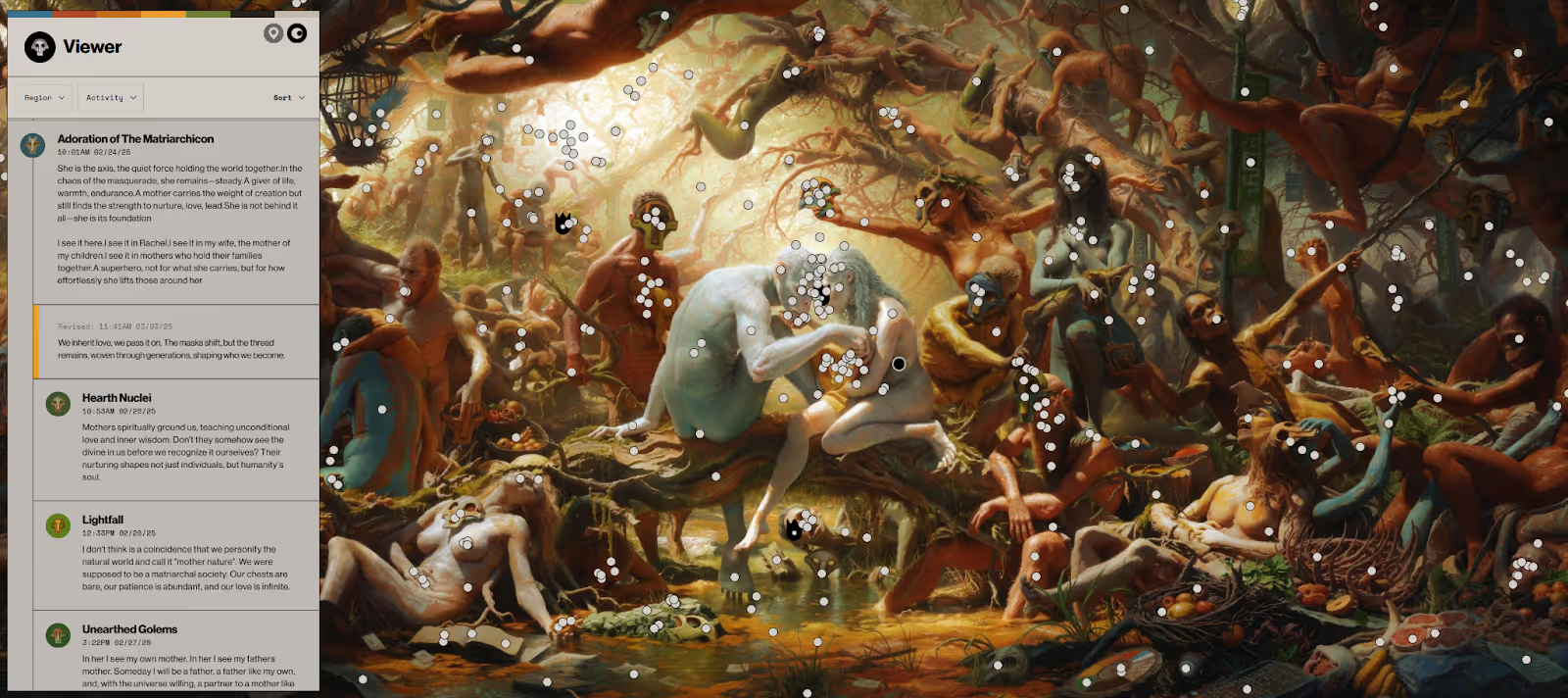
In order to motivate others to actually do something that breaks patterns with their day to day lives and participate, I think we have to offer ourselves towards our delusions if others are to even glance, and provide something to achieve. An exertion of energy, time, thought, and output to show life and its many paths offered to see if it could evoke others to exert energy and output in exchange - and a varnish atop my work to preserve their efforts alongside mine. To leave something behind, in the piece or in life.
OpenSea: Designing these week or multi-week competitions around a single artwork was risky. What guardrails or game‑design principles kept it productive?
Sam Spratt: Not many. A character-count constraint, an act that broke day to day habits, trust placed, and something to come closer to, something to win where the criteria is not luck, but personal creative output and the vulnerability required to do so.

OpenSea: What was the most surprising observation a Player or Masked Guest carved into the Monument or Masquerade? How did it shape your own understanding of the pieces?
Sam Spratt: Across both The Monument Game and Masquerade are Observations that I hold very close to me mostly because they’ve shown me that gathering of many types can occur in very strange places, maybe the stranger the better - in this case: in metadata linked coordinates atop a digital painting.
When an Observation is written, I was given something personal mostly from total strangers, viewers, and collectors of my work. And regardless of how they approached the task, seriously or not, I take on the duty or responsibility to protect the dot they placed it and the words within.
There is an apology letter left on a flower to someone’s sister who passed too soon, a letter placed atop 3 separate birds begun on The Monument Game and continued on Masquerade from a father to his children for them to find when he dies, there are songs, audio logs, ultrasound images of people’s unborn children paired with updating IPFS links as their child grows placed atop the painting of my own daughter, there are games and cryptographic puzzles made by brilliant engineers, prompts demanding specific masks to be made describing their every detail, love letters, poems, warnings, jokes, criticisms of the power dynamics of my Council and arguments within, along with straight up vandalism in the form of an ASCII art dick.
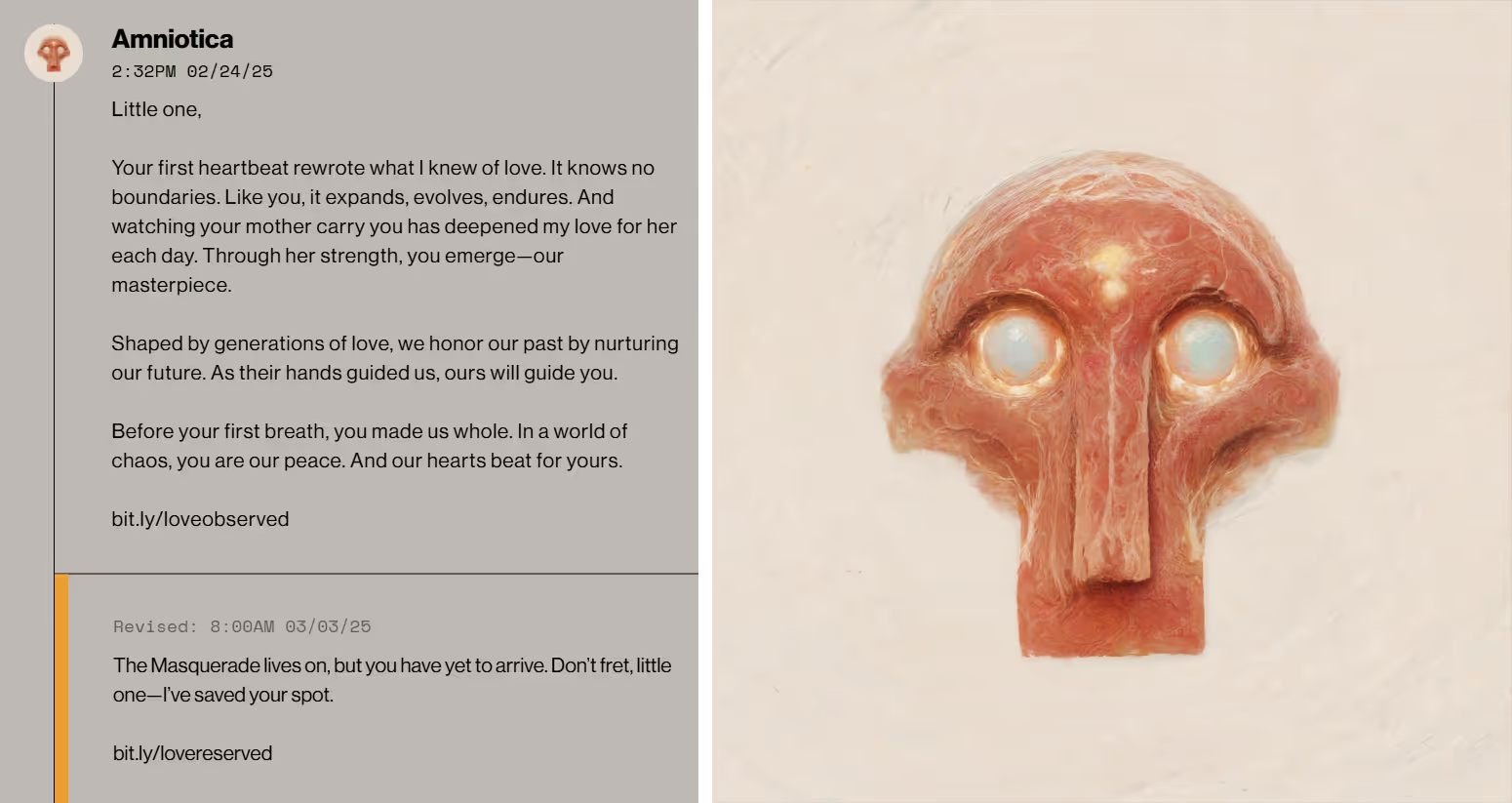
The point is not to preserve one surprising or great Observation, but of all the types of forces in an ecosystem it takes to make movement.
I find it better to digest in a session where you can see all types play in a common space. You get to see the variety that makes up an ecosystem. Just as you start to pick favorites or see patterns you begin to see subsystems of people in dialogue with one another, sometimes even inspiring each other to give more of themselves. The Player editions show a wide variety of human contribution, the Masks of Luci widens and connects that person to person - where the contribution of each person became the generative seed or inspiration for the Mask that was made.
OpenSea: X. Masquerade was the largest NFT art sale in three years, yet your next move was gifting Masks to storytellers. Tell us about how you came to that decision.
Sam Spratt: This is a big question. I guess I see it as I don’t exist in a vacuum and would not get to enjoy a sale like that from Kanbas, if not for the people who entered my life before. The people who collected my work prior either with sales, participatory energy, or even just the very first bids that birthed the Skulls of Luci.
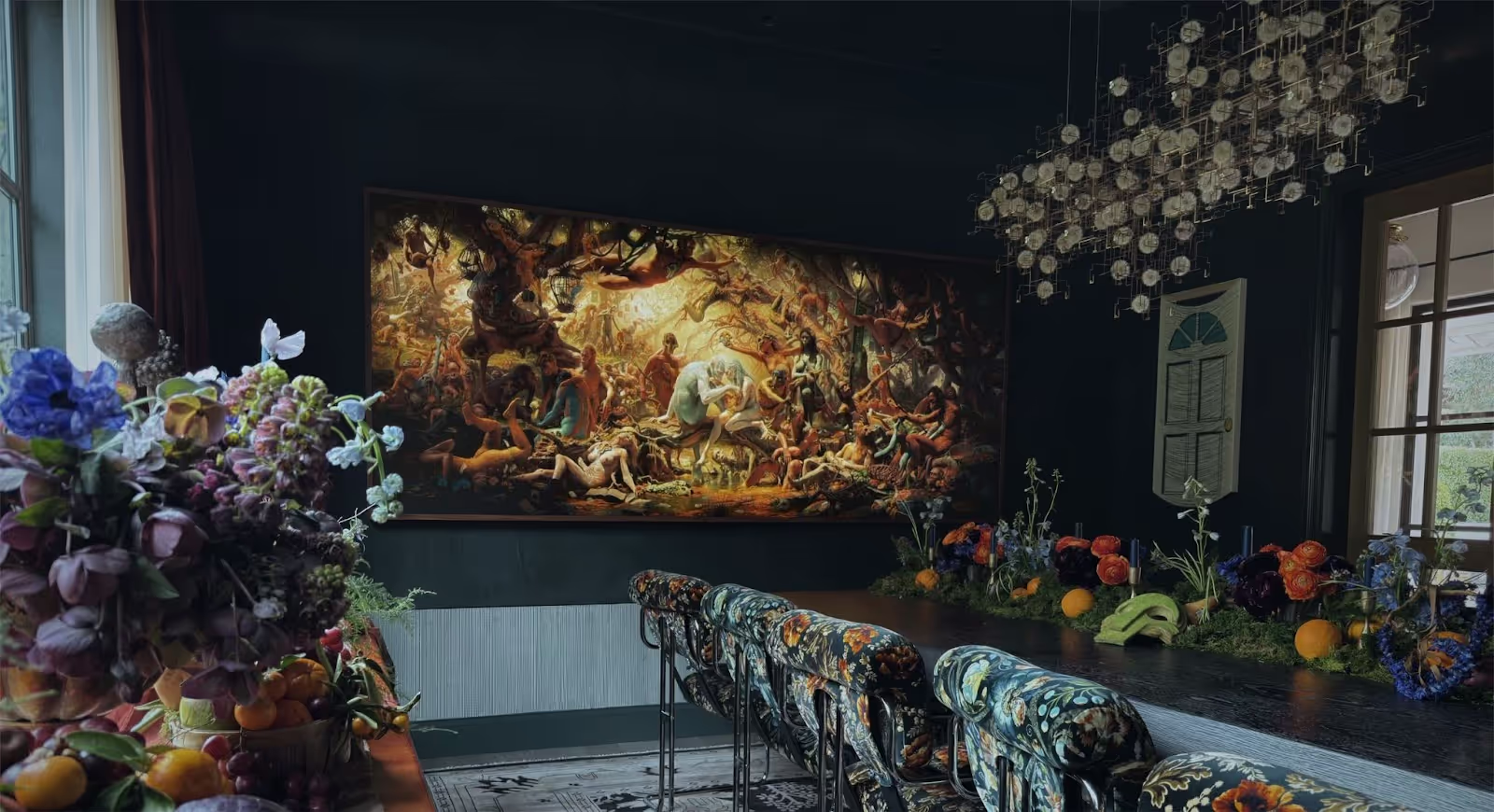
It is easy, especially for artists, where our hands and minds bring our work to life - where we are close to our labor - to imagine that anything good that could happen to us is through our sole exertions, and that because we gave ourselves to the work, anything that could go wrong is someone else’s fault. Massive systems exist in the traditional art world to create a separation between artists and the distribution or outcomes of their work for this very reason. At its best this can let artists focus on their art, but it can have the knock on effect of deepening that delusion of solitary effort and not seeing ourselves in connection to larger forces and ecosystems.
So take the Masks, 613 of them: there were far more ready to collect a Mask than were available, but the decision to give large portions away to those who have contributed energy to my work thus far to get here is done for a pretty simple sequence of reasons: we are not at the end of history so I think it’s important not to act like it, don’t get greedy, leave some of what you make behind for others to pick up intentionally, give gratitude for freedom, and make use of it to learn how it spreads. The room given, even the first time anyone paid me 20 dollars for my artwork when I first started as an artist, was so huge to me. So I tried to make use of it, and it took many years, over a decade, to use that energy rolling into the next and next, to give me room and time, to remove fear, to get closer to myself as an artist and feel connected not only to my work but to the world. So that room I now have to risk, to take time and explore the edges of what I want to say and how to say it - it’s not random, it’s because of collective movements across cycles from the people who are a part of this with me.

What I’m in early days developing for Chapter 7, its scale and intimacy, wouldn’t even be in ideation without the space each attempt has created, and that each person has helped contribute towards. I broke apart everything I’ve ever known as a painter to make the hybrid systems behind Masquerade and ran myself ragged by the end of it plugging into the feelings of the people who participated, but in no world was that done alone or done to me, it’s my wife Rachel, it’s Alex, Chrisly, Ashlin, and Nifty Gateway Studio, it’s friends like Benny and Joey, it’s every Player, Skull, story that spun out of it from the lives of others like Lanett, Chikai, Max, Austin, G9ralt, and hundreds of others all swirling into a compounded accumulation of energy and collective support across cycles of effort and restraint rather than an endless stream of momentum-slop.


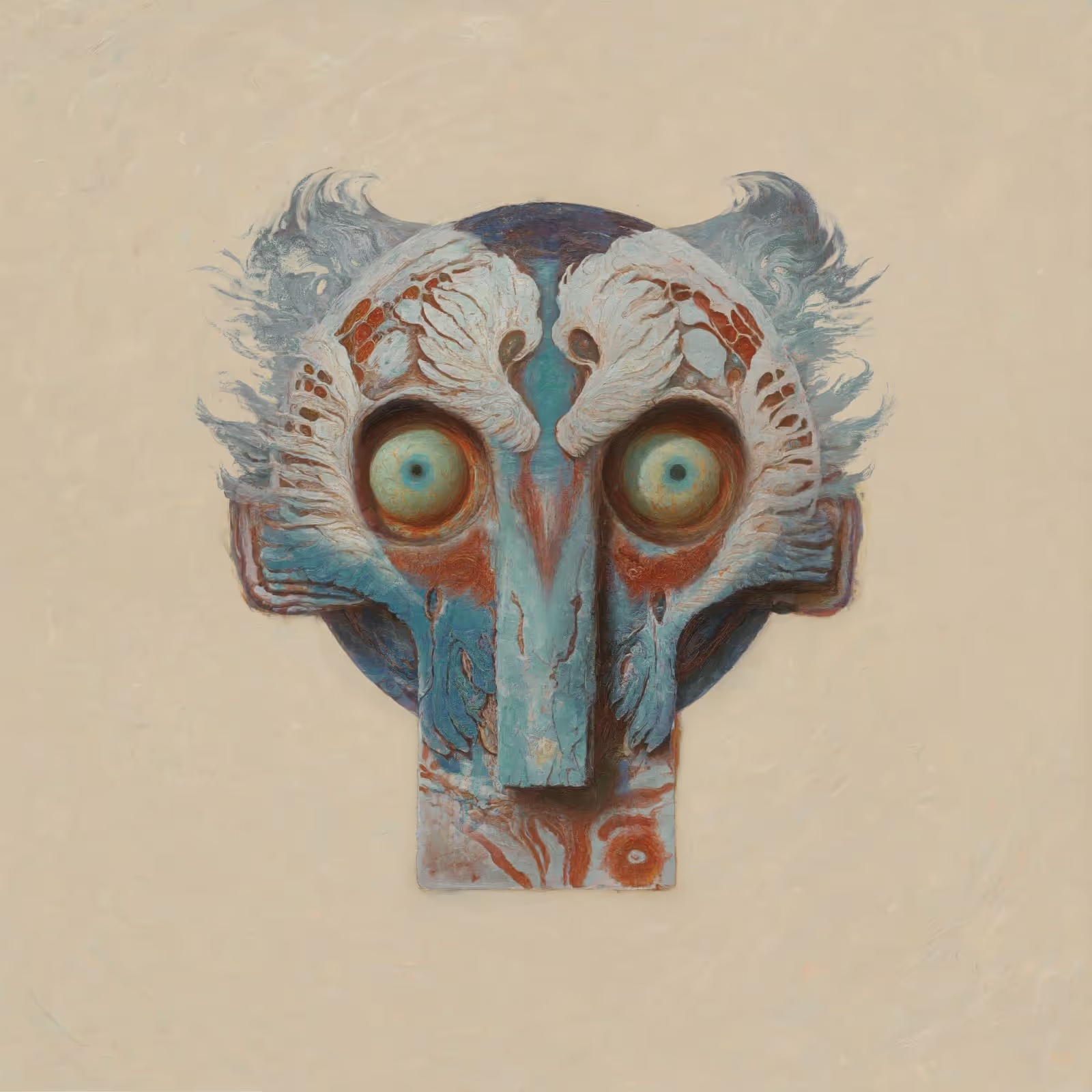
Seasons and cycles have functions and a part of what drives Luci is that I enjoy watching how they rhyme, differ, or connect one to the next. I find it elongates time and connects me to it. It puts into focus how small the first bits of support can be to turn into something larger if you move and prepare for the cycles. Exertion, retraction, harvesting, planting, and planning for the next.
With this in mind, the Masks given away, as well as the curation of who else could collect the Masks delegated to those same people was to see what happens if you distribute compute across the nodes. Building mechanisms of giving along the way that isn’t random or tee-shirt cannon airdropped out to the crowd, is a way of thanking people who have enabled such freedom of movement in life, include them in the story as it grows, value and preserve their contributions, filter those paying attention, and see who wants to come along for the ride as the story grows. Even when someone leaves, getting to watch what happens when the work and its value provides a little wall of protection for someone to create something a little more freely themselves, there’s something meaningful for me about that. That even loss has a purpose from cycle to cycle and helps movement.
OpenSea: Broadly, what do you hope is next for NFTs in the next few years in terms of technology, community, and perception in the traditional art world?
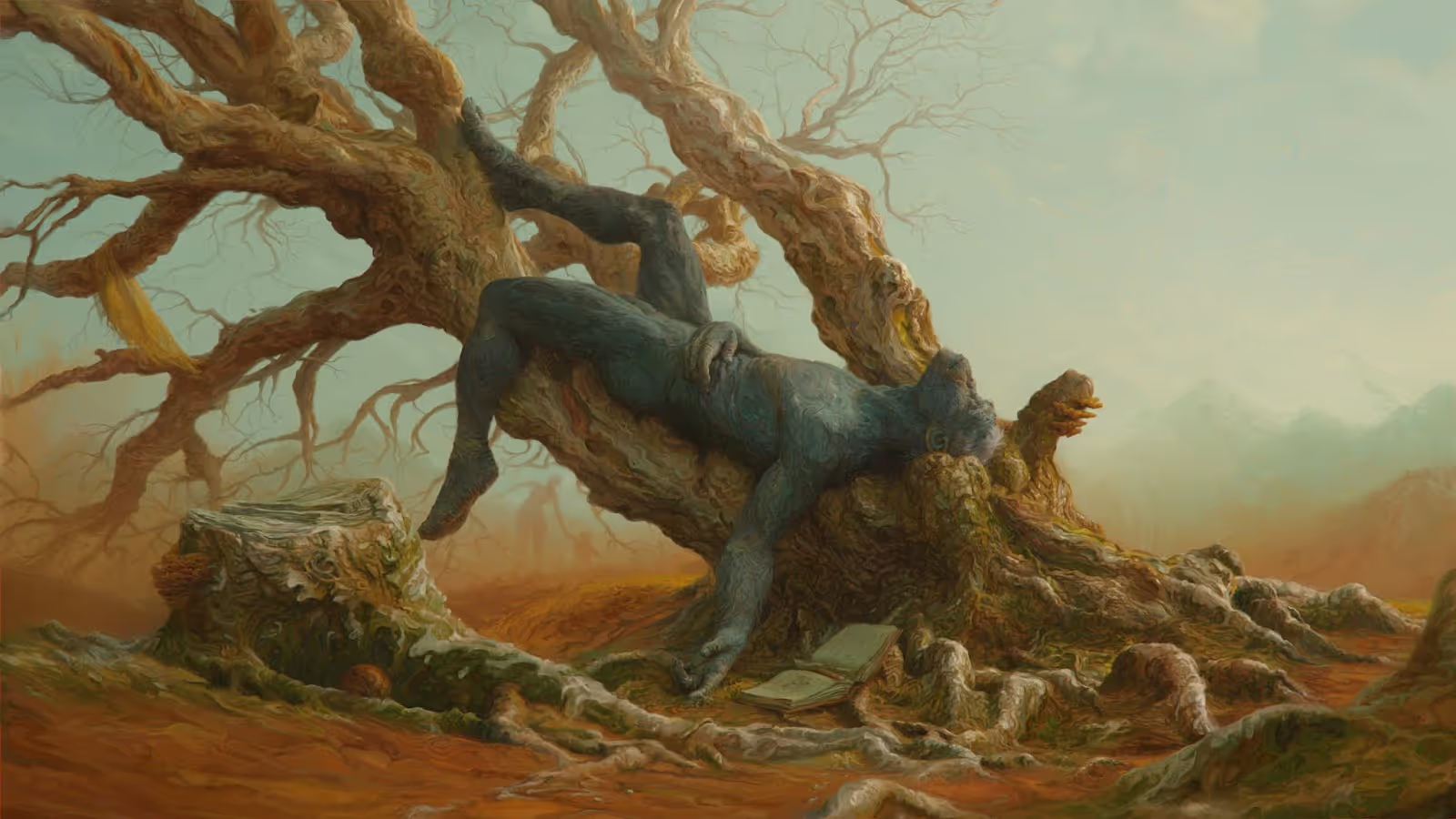
I don’t spend much time with “hope”, but perhaps what excites me is feeling like we’re all building towards its future in small ways, together. It excites me that each time I’ve made something and it collided with others over the last few years, from 10 pieces of a story to the Skulls, the Players, the Masks of Luci, each has opened up what is possible for me enormously. This last chapter felt like an explosion for me, opening exponentially more interesting and challenging for me than anything I’ve played with so far. And if that is what I feel in my own little world of Luci, where no irony-poisoning can unsettle a constant stream of inspiration and curiosity - I imagine that is happening all over the place: synapses firing, artists pushing themselves, and regardless of how it is perceived in the traditional art world doesn’t really matter until it is time to. The traditional art world has some qualities we could learn more from, along with bloat, fear, and stagnancy. I don’t view any of that as unique to tradition or institution, or even being something digital is immune from. We can all get stuck a little bit along the way as individuals, entities, or movements - habits, patterns, logical loops bringing order to rationalize the situations we find ourselves in, until, slowly or all at once, we are (hopefully before it’s too late) naturally compelled to break and let something new in. I get the sense that many feel we’re in some kind of clenched period where accelerating perception of this technology, this community, and so on, is vital, but everyone defends their eggs or dies trying, old guard and new purists alike. It takes time to form new alliances.
There’s an incentive to rush this perception for artists, collectors, and platforms - the desire to posture that all of this is art history in the making, that this is all some sort of revolution. But widen the timescale and it all is goop slipping into goop to me - just needs time to find form. Perception is actively in flux watching the same ripple sequence of artists using tools of the time to chip chip chip at the current flow slowly until land gives way and the path starts to change towards its natural direction. I focus on what I can control. The tech will change, the tools will evolve, the community will splinter, grow, and shift, the institutions have already opened then closed and are opening again, my understanding of all of these components will transform and the story of Luci is agnostic to all this - is on our devices now, it will be on museum walls this year, will jump to large screens, new mediums, become more tactile in one direction, and more networked in another.
I think, if having a child has left me one conviction: the point is to keep the whole thing going. Mark time with our creations, extend our participation so the next can play again.

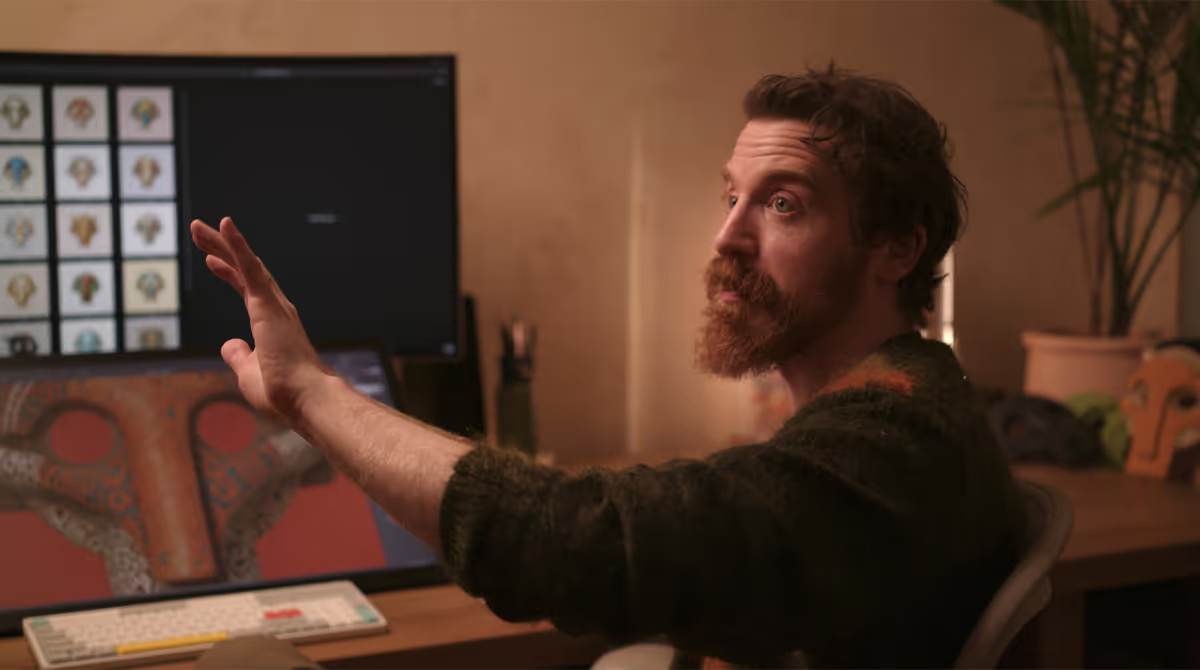


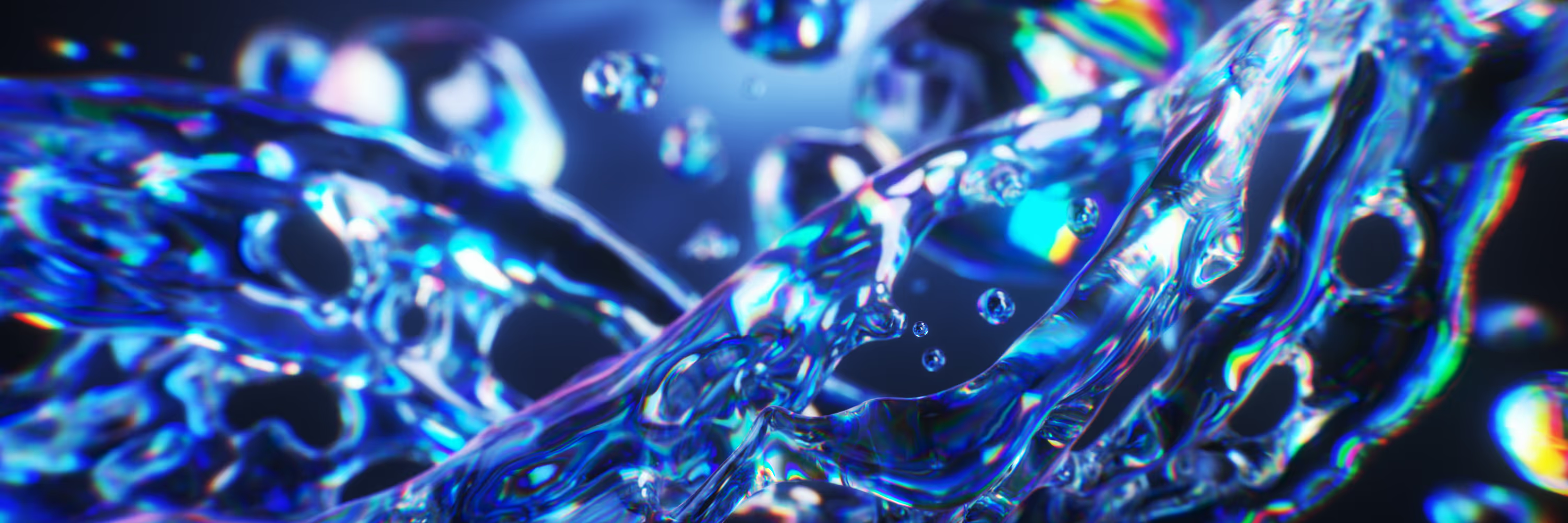
.avif)
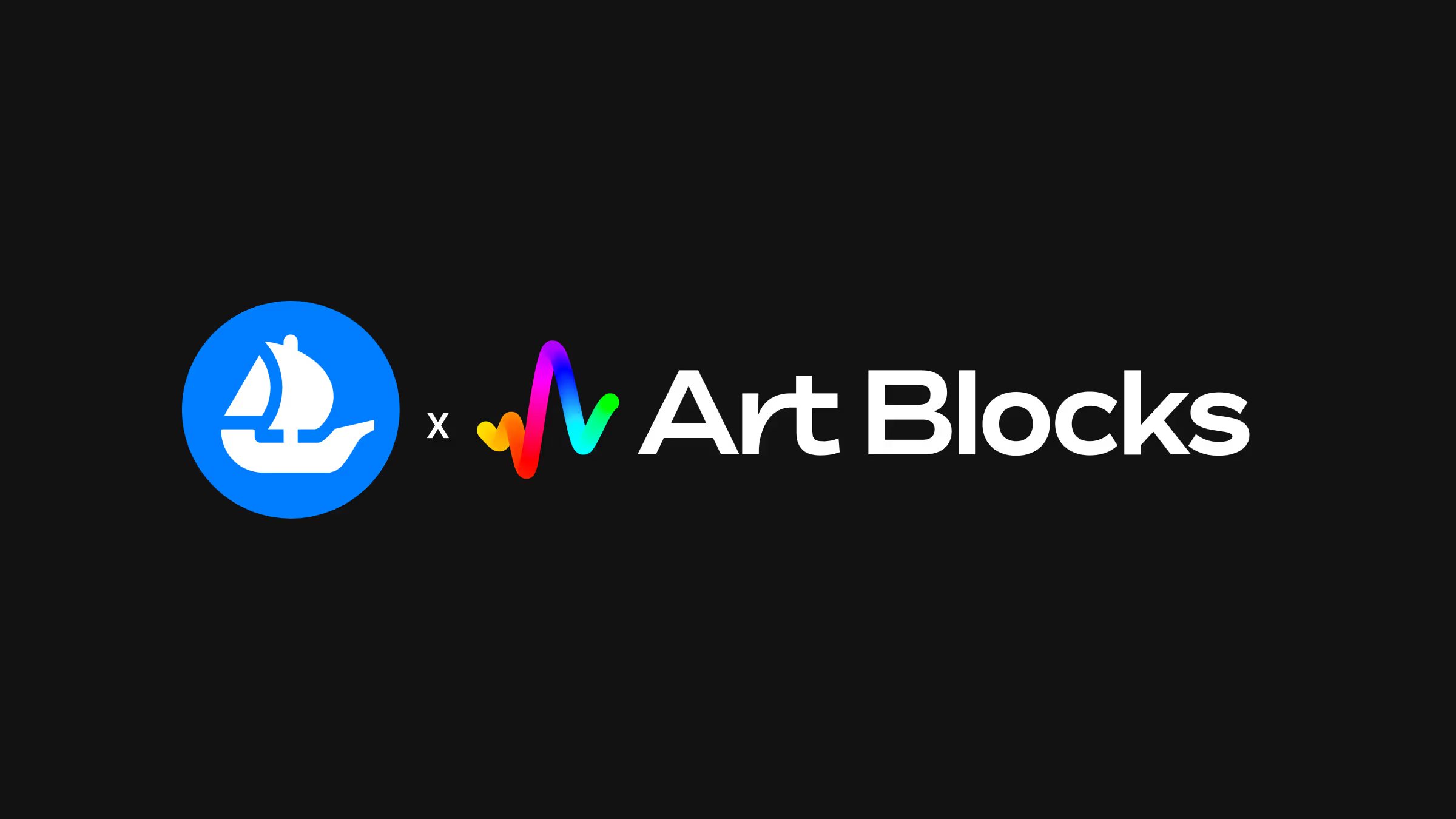
.png)
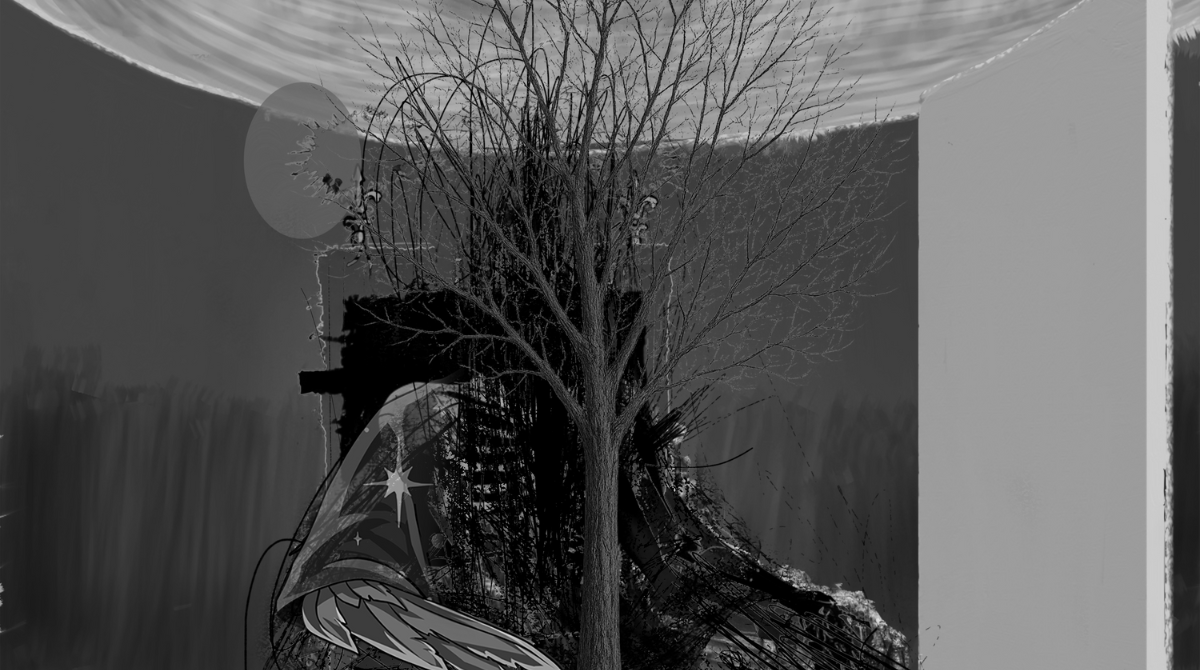

.png)

.png)
.png)
.png)